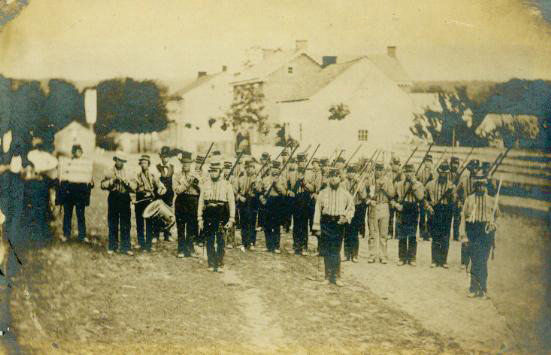The village of Lisburn is located in the eastern portion of Cumberland County in a loop of the Yellow Breeches Creek and is bounded by York County. An iron forge was established there before the Revolution and a mill in the 1780s. Village lots were laid out on the northern portion of the main road through the village in the 1760s and on the southern side in 1785.
In April 1841, Peter McCann, of Lisburn, petitioned the court for a tavern license. Two of the men who signed his petition were Henry McCoskrey and Morris Einstein.1 Four months later, a fire would destroy McCann’s tavern, Einstein’s store, and McCoskrey’s house.
George Sanderson, the editor of the American Volunteer, published a letter sent to him by a resident of Lisburn who described the conflagration.2 He reported that at around midnight, on July 29, 1841, the cry of fire aroused the residents of Lisburn. By that time, the fire had caught such hold that it could not be put out. The entire goods in Mr. Einstein’s store were destroyed, and “Mr. Einstein narrowly escaped with his life, being nearly suffocated before he could be roused from his bed.” 3 Mr. Einstein’s store was located in the large building occupied by Henry McCoskrey and the tavern of Peter McCann. All were destroyed.
The building was owned by Peter McCann. Everything he possessed, both real and personal, was lost in the fire. The letter writer said that Mr. McCann, “is an old and respectable citizen, and has kept a pubic house in the village of Lisburn since the year 1807. Honest, sober, and always ready to accommodate those who gave him a call.” The letter writer hoped that the citizens of Cumberland and York counties would lend their aid and assistance to the men who had lost so much. The loss of property was estimated between eight and ten thousand dollars.
This was not the first time Henry McCoskrey lost his property in a fire. His coach maker shop burned down in 1835, and he was forced to declare insolvency.4 He had a hard time recovering, and declared insolvency again in 1838.5
After the fire, Morris Einstine moved his family to Lewisberry, York County, Pennsylvania where he operated a store. By 1860, Einstein was living in Harrisburg where he kept a dry goods store into the 1880s. 6
Tavernkeeper McCann died five years after the fire.
